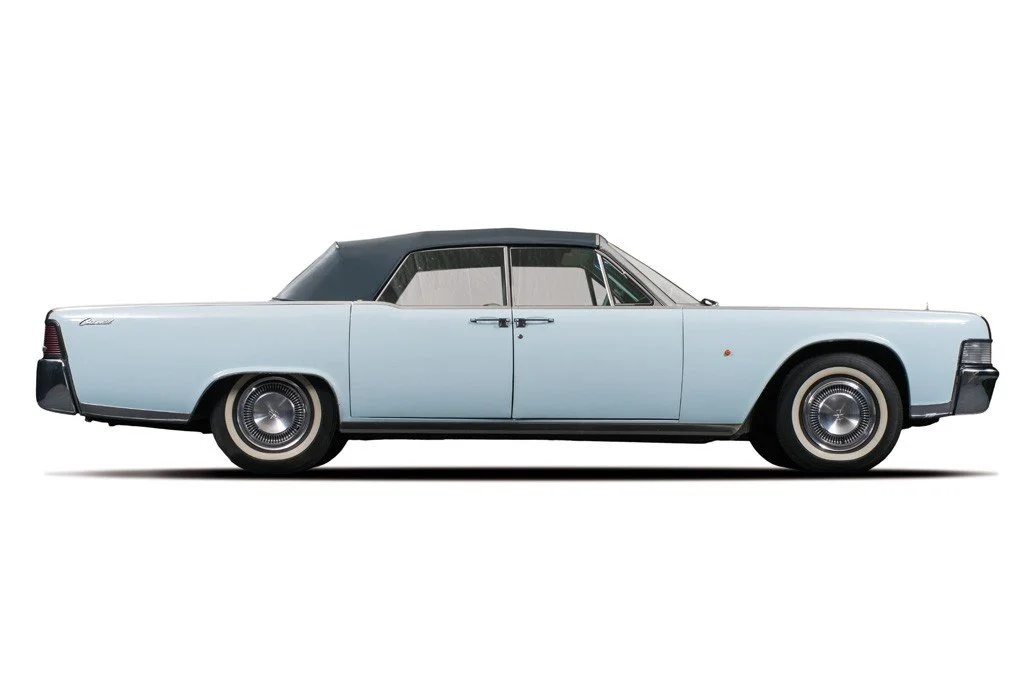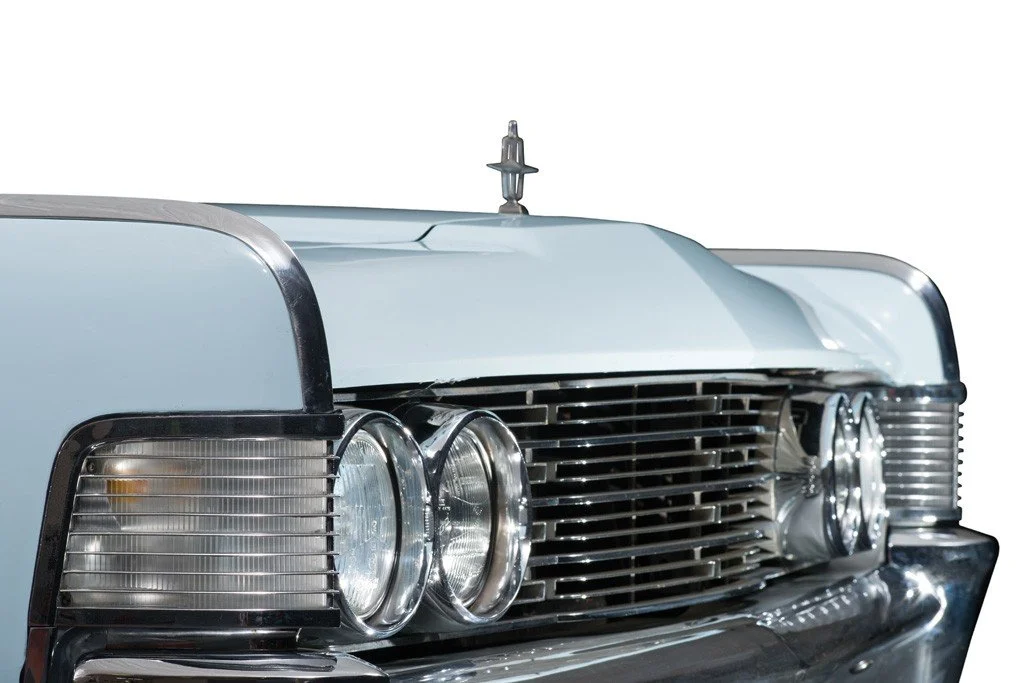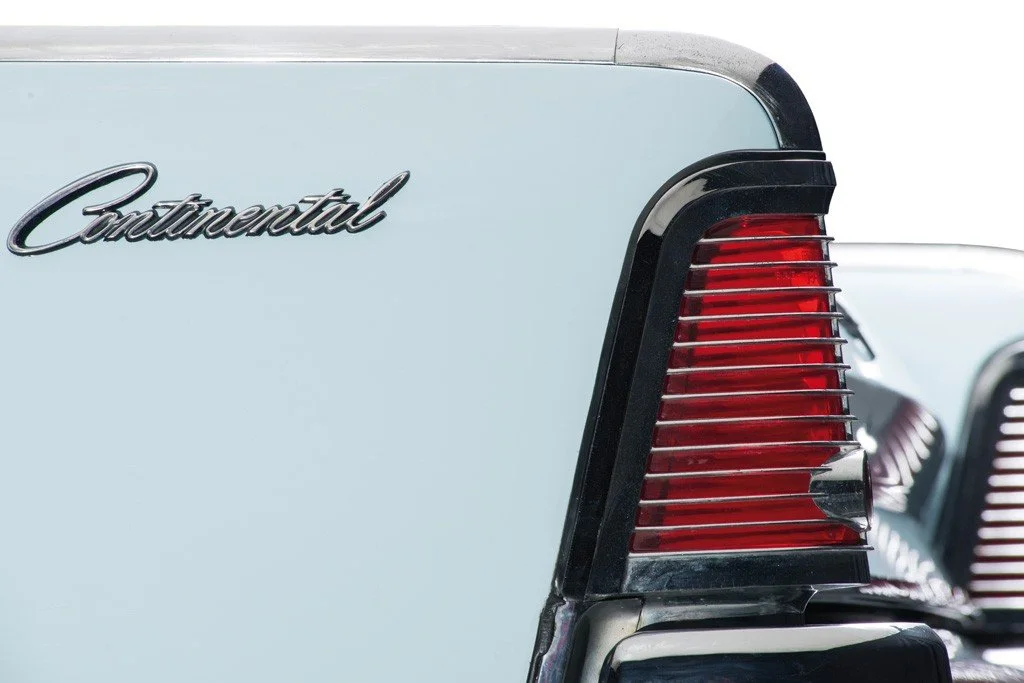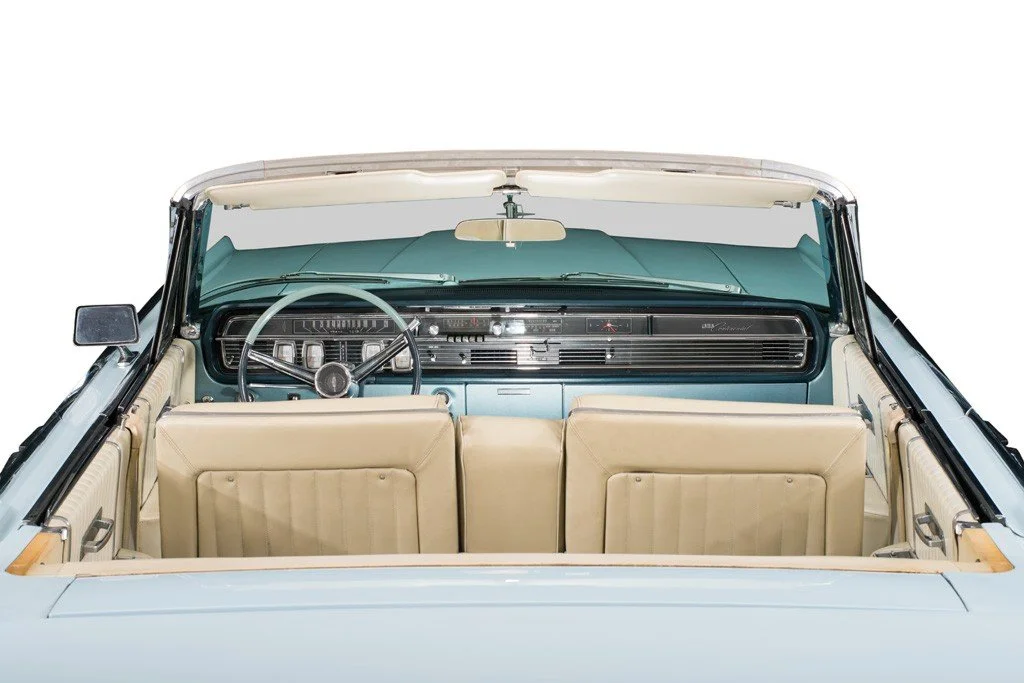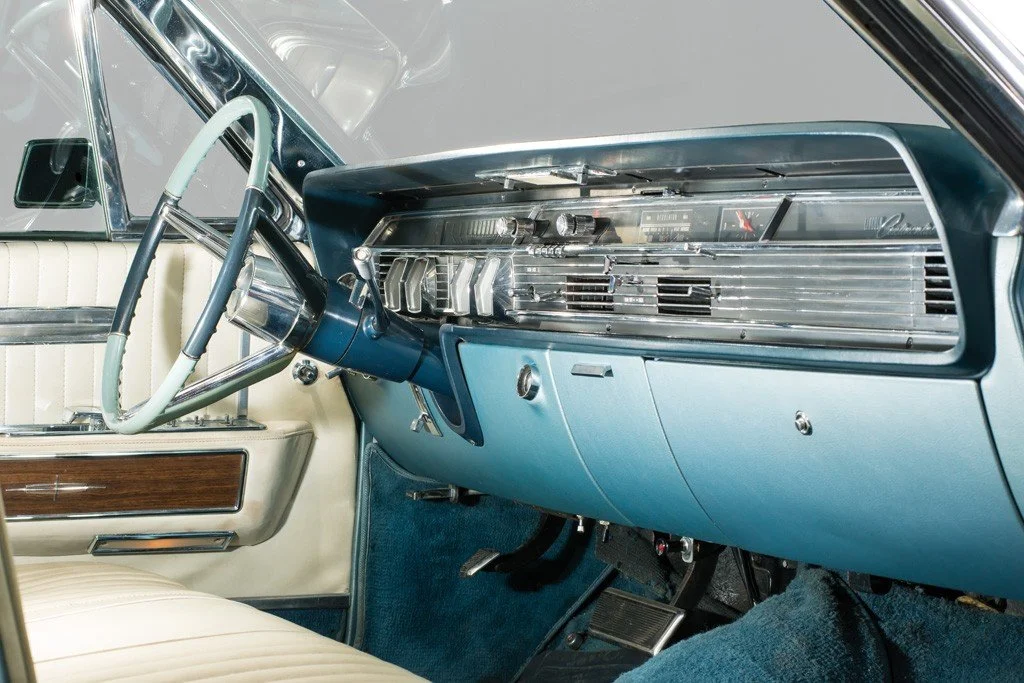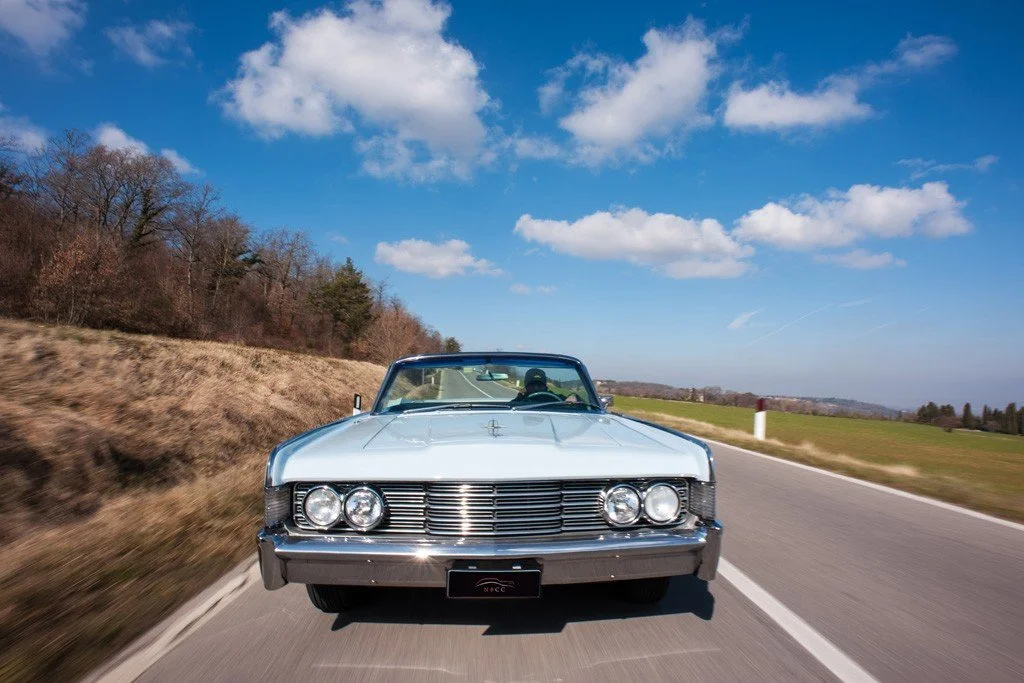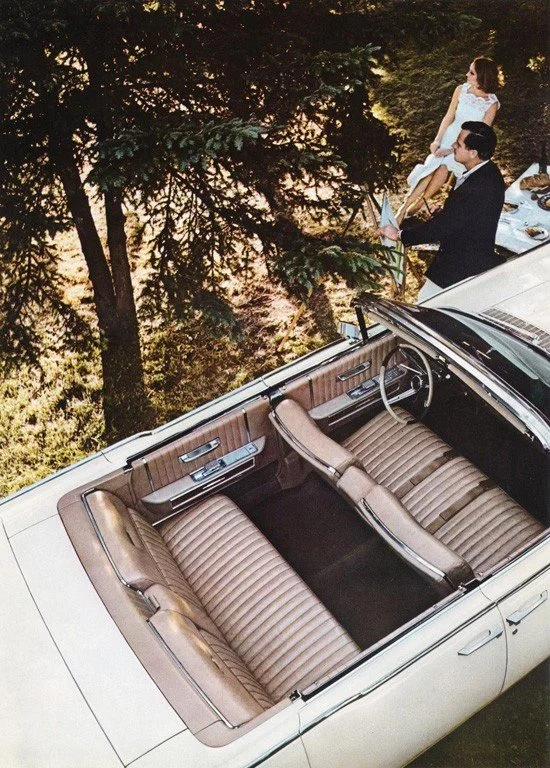-
The Lincoln Continental of the sixties is considered another icon among American historic cars. Although its fame is sadly linked to the assassination of President John Fitzgerald Kennedy, the unusual four door (nicknamed suicide door) Lincoln Convertible is indisputably a cult car.
This 1965 model joined the Nicola Bulgari Collection in 1999, purchased from Germany it did not require restoring, just some routine and additional maintenance work, as it had been well cared for by its previous owners over the years. It is a completely original, matching number car: the body paintwork is in Light Blue whereas the interior has seats in White leather. Under the hood its big block 430 cid engine is paired with Twin-Range Turbo-Drive 3-speed automatic transmission in accordance with manufacturer specifications. The hydraulic system of the roof, at the time often criticized for faulty functioning, works perfectly together with the simultaneous opening of the trunk.
This Lincoln has been listed on the ASI Historic Car Register since 2005. -
Company
Ford Motor Co.Wheelbase
126inInterior trim
White/Blue leatherBrakes
disc front, drum rearMake
LincolnLength
216.6inEngine
V8 - 430cidTires
9.15x15Model
ContinentalWidth
78.6inCarburetor
1 Carter 4-barrelOriginal Price
$6,798Body style
4-door ConvertibleWeight
5475lbsHorsepower
320hp @ 4600rpmProduction
3,356Model year
1965Exterior paint
Light BlueTransmission
Twin-Range Turbo-Drive automatic 3-speed -
The fourth generation of the Continental (1961–1969) was completely redesigned by Elwood Engel. In 1961, for the first time, the names Lincoln and Continental would be paired together outside the Mark Series; along with replacing the Continental Mark V, the 1961 Continental replaced the Lincoln Capri and Premiere, consolidating Lincoln into a single product line. Originally intended to be the 1961 Ford Thunderbird, the design was enlarged and slightly altered before being switched to the Lincoln line by Robert McNamara. One of the most striking features of the new Continental was its size. It was 14.8 in (380 mm) shorter than its predecessor. So much smaller was this car, that advertising executives at Ford photographed a woman parallel parking a sedan for a magazine spread.
The 1964-1965 Lincoln Continental benefited from several new standard features. For 1964, those features included a low-fuel warning light, vertically adjustable steering column, auxiliary map light, automatic parking-brake release, and inch-larger (15-inch) wheels providing better brake cooling. Chassis specs were otherwise unchanged save the expected recalibrating of springs and shocks. The driveline was also untouched, Lincoln's big 430 V-8 returning with 320 horsepower and again mating with Twin-Range Turbo-Drive automatic transmission.
That the Continental would evolve in so measured a way was by now an article of faith among buyers, particularly those who had crossed over to Lincoln after being turned off by Cadillac's constant revisions. Keeping the faith convinced some 4,000 more to join the ranks for 1964, though Cadillac sales were also up -- but not nearly as much. The sales gulf between these rivals was still huge, thanks to Cadillac's broader lineup and bigger dealer network, but it was smaller than it had been for quite a while.
Continental's considered evolution continued for 1965, when Lincoln bucked tradition by not raising prices so much as a dollar despite adding front-disc brakes to an already lengthy list of standard equipment. Styling updates were as mild as ever: just a new horizontal-bar grille with prominent center bulge, wraparound parking/turn signal lamps visible from most every angle, and back panels without the customary metal appliques echoing grille texture. A vinyl roof covering was a new sedan option ($105) and proved quite popular. Air conditioning, which now reached a 90-percent installation rate, was the only other major extra ($505) save individual power front seats ($281).
As it had every year since 1961, Lincoln volume increased for 1965, ending just above 40,000, over 3,000 more than in model-year 1964. The sedan accounted for most of the gain; the convertible was still selling at a 3,000-3,400 annual clip. Lincoln had every reason to be satisfied with this performance - but, of course, it wasn't. Seeking still higher sales, Lincoln was readying even bigger and better Continentals for 1966.




